Entry Database : PDB / ID : 3vsoTitle Human PPAR gamma ligand binding domain in complex with a gamma selective agonist mekt21 Peroxisome proliferator-activated receptor gamma Keywords / / Function / homology Function Domain/homology Component
/ / / / / / / / / / / / / / / / / / / / / / / / / / / / / / / / / / / / / / / / / / / / / / / / / / / / / / / / / / / / / / / / / / / / / / / / / / / / / / / / / / / / / / / / / / / / / / / / / / / / / / / / / / / / / / / / / / / / / / / / / / / / / / / / / / / / / / / / / Biological species Homo sapiens (human)Method / / / Resolution : 2 Å Authors Oyama, T. / Waku, T. / Ohashi, M. / Morikawa, K. / Miyachi, H. Journal : Bioorg.Med.Chem. / Year : 2013Title : Design and synthesis of a series of alpha-benzyl phenylpropanoic acid-type peroxisome proliferator-activated receptor (PPAR) gamma partial agonists with improved aqueous solubilityAuthors : Ohashi, M. / Oyama, T. / Putranto, E.W. / Waku, T. / Nobusada, H. / Kataoka, K. / Matsuno, K. / Yashiro, M. / Morikawa, K. / Huh, N.H. / Miyachi, H. History Deposition Apr 30, 2012 Deposition site / Processing site Revision 1.0 May 1, 2013 Provider / Type Revision 1.1 Nov 8, 2023 Group Data collection / Database references ... Data collection / Database references / Derived calculations / Refinement description Category chem_comp_atom / chem_comp_bond ... chem_comp_atom / chem_comp_bond / database_2 / pdbx_initial_refinement_model / struct_ref_seq_dif / struct_site Item _database_2.pdbx_DOI / _database_2.pdbx_database_accession ... _database_2.pdbx_DOI / _database_2.pdbx_database_accession / _struct_ref_seq_dif.details / _struct_site.pdbx_auth_asym_id / _struct_site.pdbx_auth_comp_id / _struct_site.pdbx_auth_seq_id
Show all Show less
 Yorodumi
Yorodumi Open data
Open data Basic information
Basic information Components
Components Keywords
Keywords Function and homology information
Function and homology information Homo sapiens (human)
Homo sapiens (human) X-RAY DIFFRACTION /
X-RAY DIFFRACTION /  SYNCHROTRON /
SYNCHROTRON /  MOLECULAR REPLACEMENT / Resolution: 2 Å
MOLECULAR REPLACEMENT / Resolution: 2 Å  Authors
Authors Citation
Citation Journal: Bioorg.Med.Chem. / Year: 2013
Journal: Bioorg.Med.Chem. / Year: 2013 Structure visualization
Structure visualization Molmil
Molmil Jmol/JSmol
Jmol/JSmol Downloads & links
Downloads & links Download
Download 3vso.cif.gz
3vso.cif.gz PDBx/mmCIF format
PDBx/mmCIF format pdb3vso.ent.gz
pdb3vso.ent.gz PDB format
PDB format 3vso.json.gz
3vso.json.gz PDBx/mmJSON format
PDBx/mmJSON format Other downloads
Other downloads 3vso_validation.pdf.gz
3vso_validation.pdf.gz wwPDB validaton report
wwPDB validaton report 3vso_full_validation.pdf.gz
3vso_full_validation.pdf.gz 3vso_validation.xml.gz
3vso_validation.xml.gz 3vso_validation.cif.gz
3vso_validation.cif.gz https://data.pdbj.org/pub/pdb/validation_reports/vs/3vso
https://data.pdbj.org/pub/pdb/validation_reports/vs/3vso ftp://data.pdbj.org/pub/pdb/validation_reports/vs/3vso
ftp://data.pdbj.org/pub/pdb/validation_reports/vs/3vso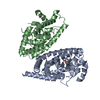
 Links
Links Assembly
Assembly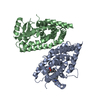

 Components
Components Homo sapiens (human) / Gene: PPARG, NR1C3 / Plasmid: pet28a / Production host:
Homo sapiens (human) / Gene: PPARG, NR1C3 / Plasmid: pet28a / Production host: 
 X-RAY DIFFRACTION / Number of used crystals: 1
X-RAY DIFFRACTION / Number of used crystals: 1  Sample preparation
Sample preparation SYNCHROTRON / Site:
SYNCHROTRON / Site:  SPring-8
SPring-8  / Beamline: BL38B1 / Wavelength: 1 Å
/ Beamline: BL38B1 / Wavelength: 1 Å Processing
Processing MOLECULAR REPLACEMENT
MOLECULAR REPLACEMENT Movie
Movie Controller
Controller



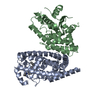
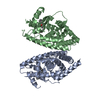
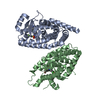

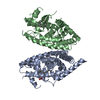

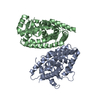
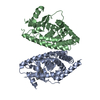

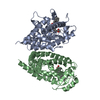
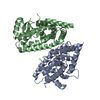
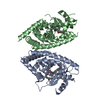
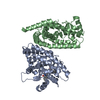
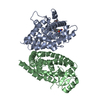
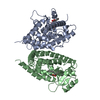
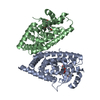



 PDBj
PDBj


